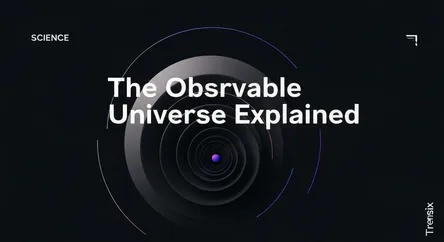Science
The Observable Universe Explained

Explore the observable universe: the cosmic sphere visible from Earth, limited by light speed and the universe's age. See why it's trending now.
What is it?
The observable universe is the spherical region of space visible from Earth. Its boundary is limited by the speed of light and the age of the cosmos (13.8 billion years). Because space itself is expanding, the current diameter of this observable sphere is about 93 billion light-years. It contains every galaxy, star, and structure we can theoretically detect from our vantage point. The entire universe, however, could be vastly larger or even infinite.
Why is it trending?
The topic is trending thanks to groundbreaking discoveries from the James Webb Space Telescope (JWST). JWST is capturing unprecedented images of the earliest galaxies, pushing the limits of our vision back to the cosmic dawn. These findings challenge our models of cosmic evolution and generate immense public excitement. Every new image from the edge of our cosmic horizon sparks discussion about the origins of our universe.
How does it affect people?
Studying the cosmos shapes our perspective and drives technology. The challenge of observing distant galaxies fuels innovation in engineering and computing. On a human level, it provides a profound sense of scale, inspiring awe and humility. It forces us to confront fundamental questions about our origins and place in the universe, influencing philosophy, art, and our collective search for meaning.